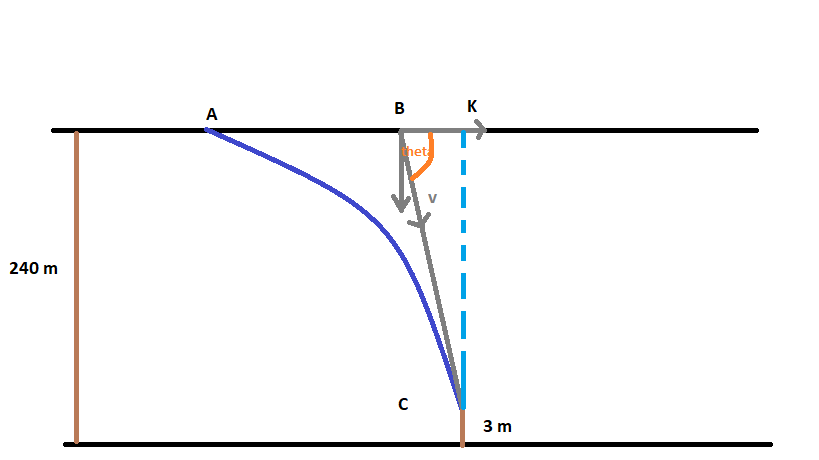What angle did the hawk make with the horizontal during its descent?

1 Answer
Please see below
Explanation:
Suppose,the mouse was released at point

Now,when the mouse was released it had an initial horizontal velocity as same as that of the hawk,and due to the pull of the gravity it followed this parabolic path.
So,vertical length from
So,for falling by this distance if the mouse took time
So,
this is the time for which the mouse enjoyed free fall,
Now,in this time its horizontal displacement (
Now,the question says,after releasing the mouse,the hawk went on flying with its initial velocity for
So,if it dived with velocity
So,again considering vertical motion only for the hawk,we can say,
so,
Again in this time the hawk will also have a horizontal displacement of
But it went from
So,
So,
So,
So,
So, we can say,
or,

